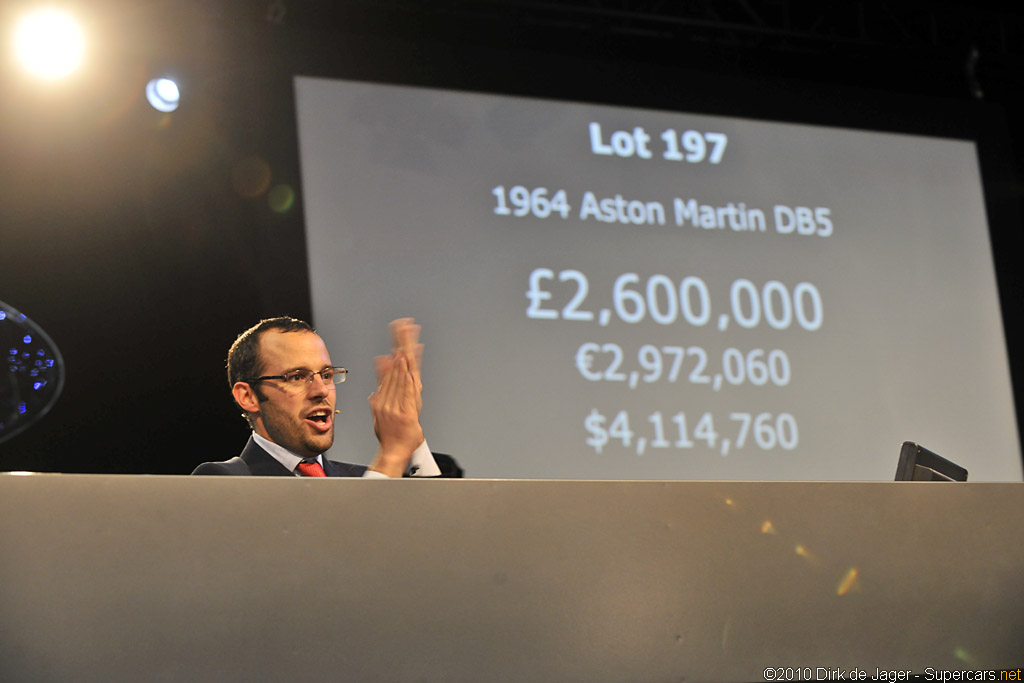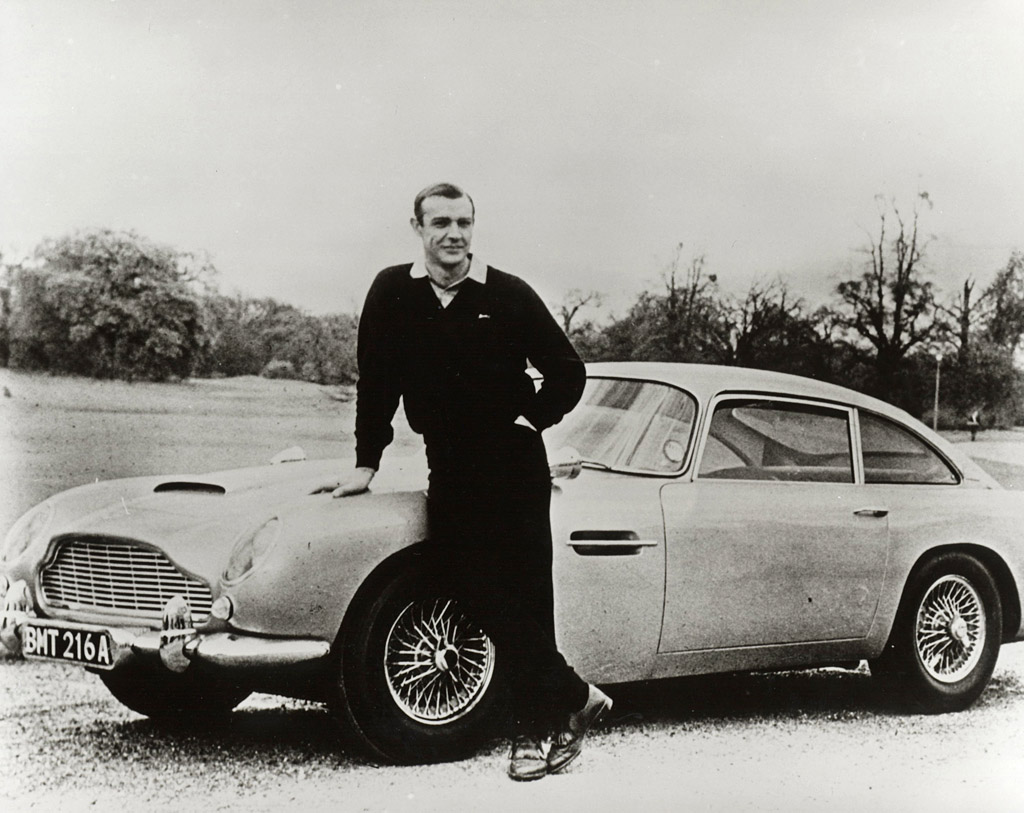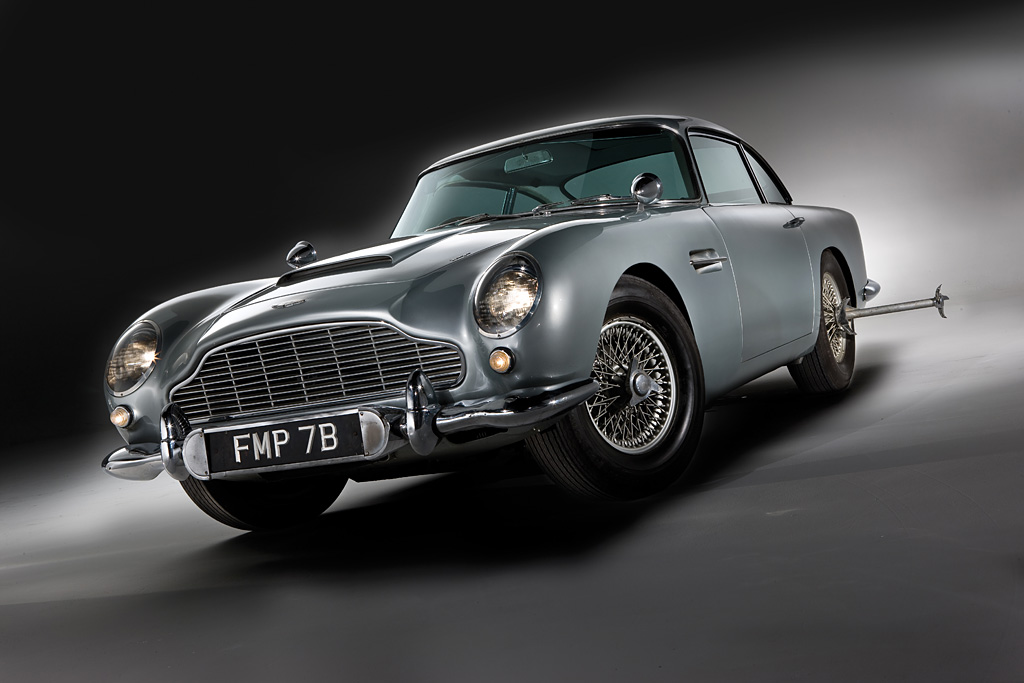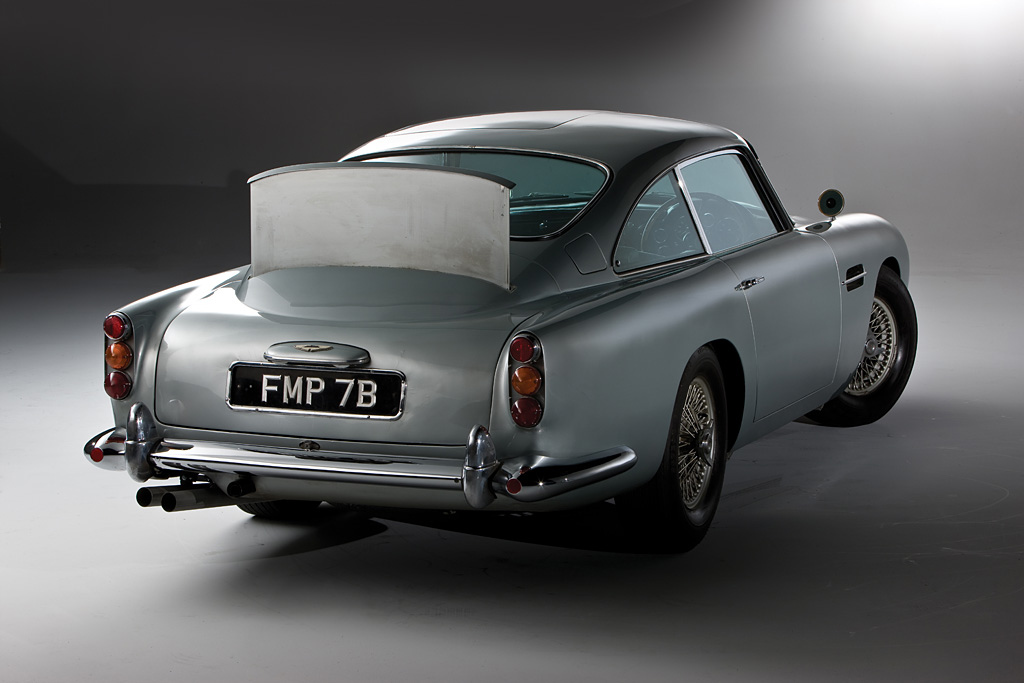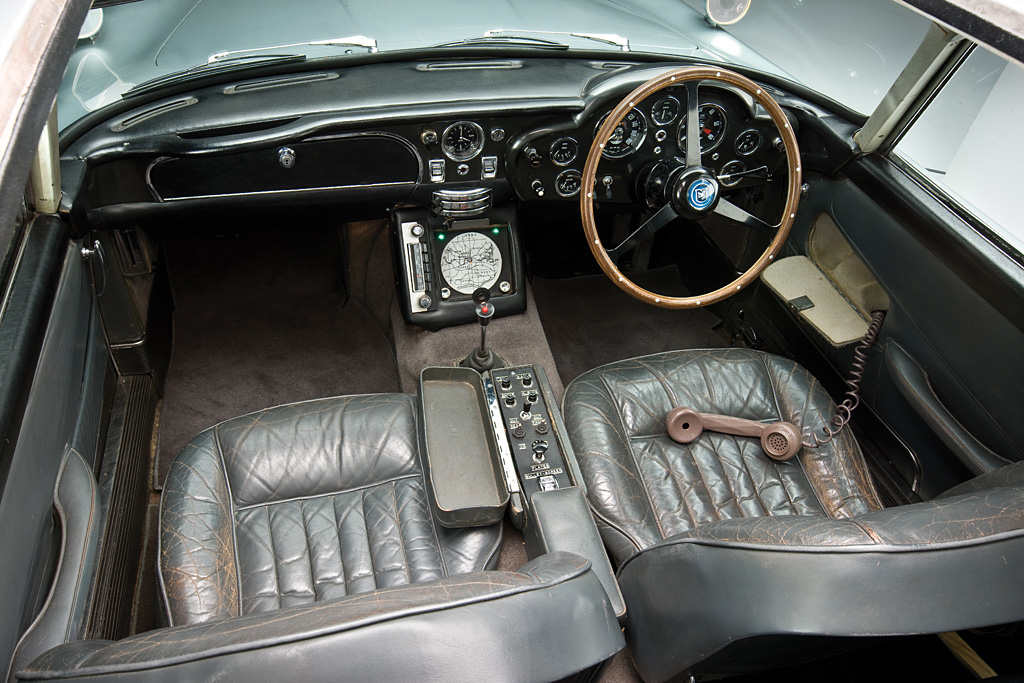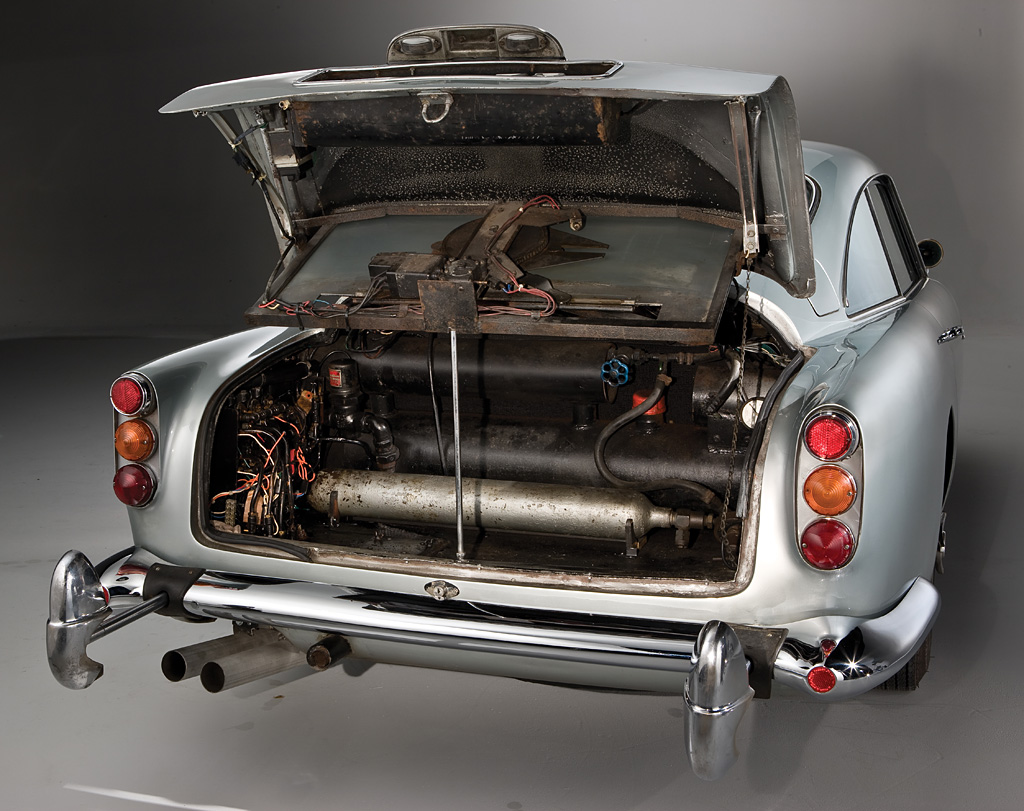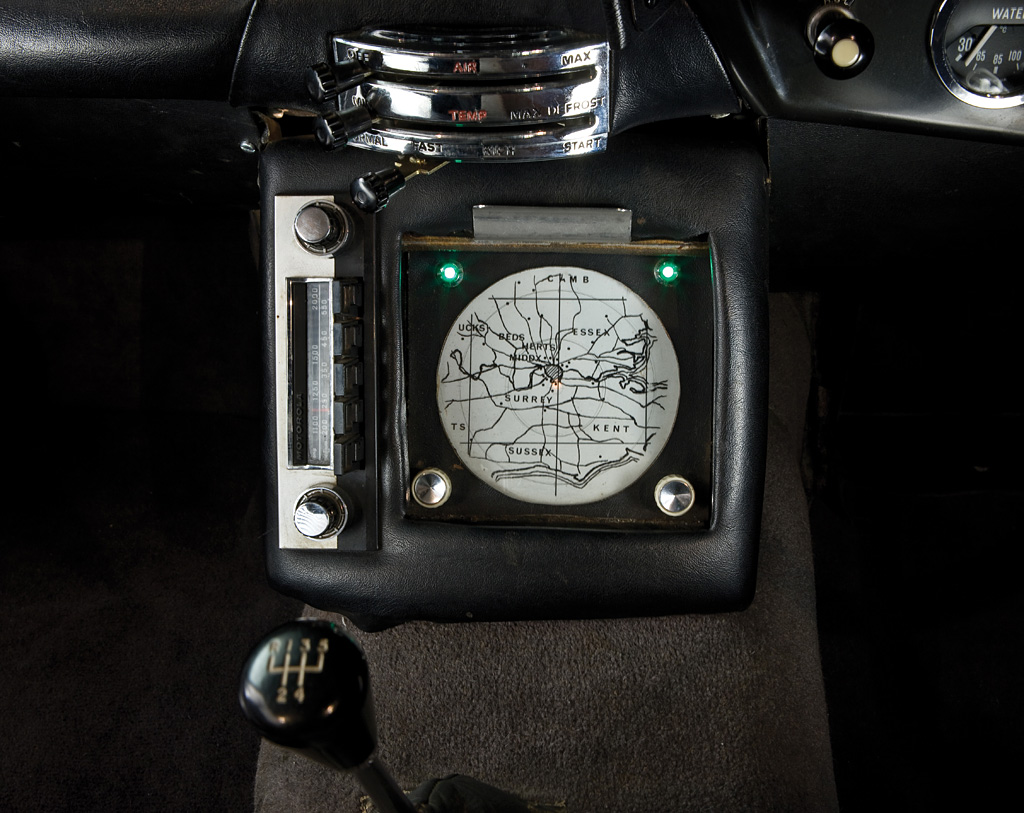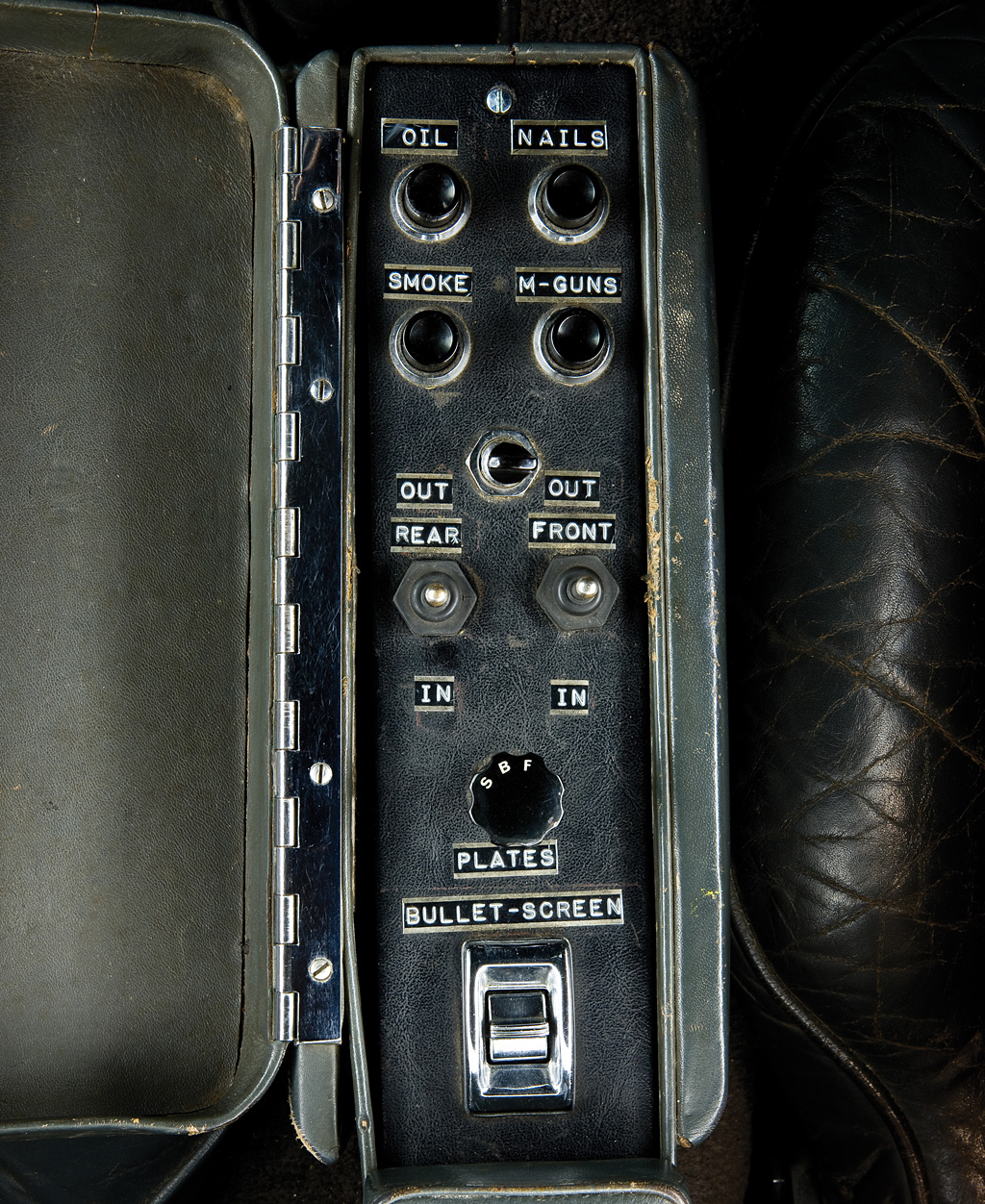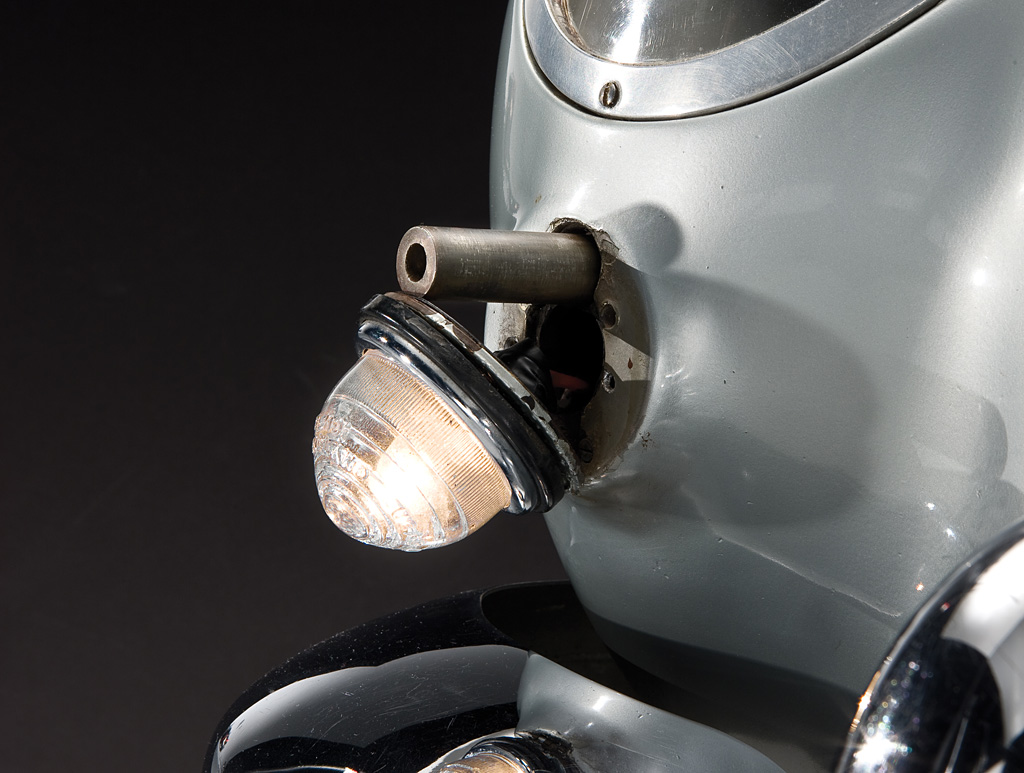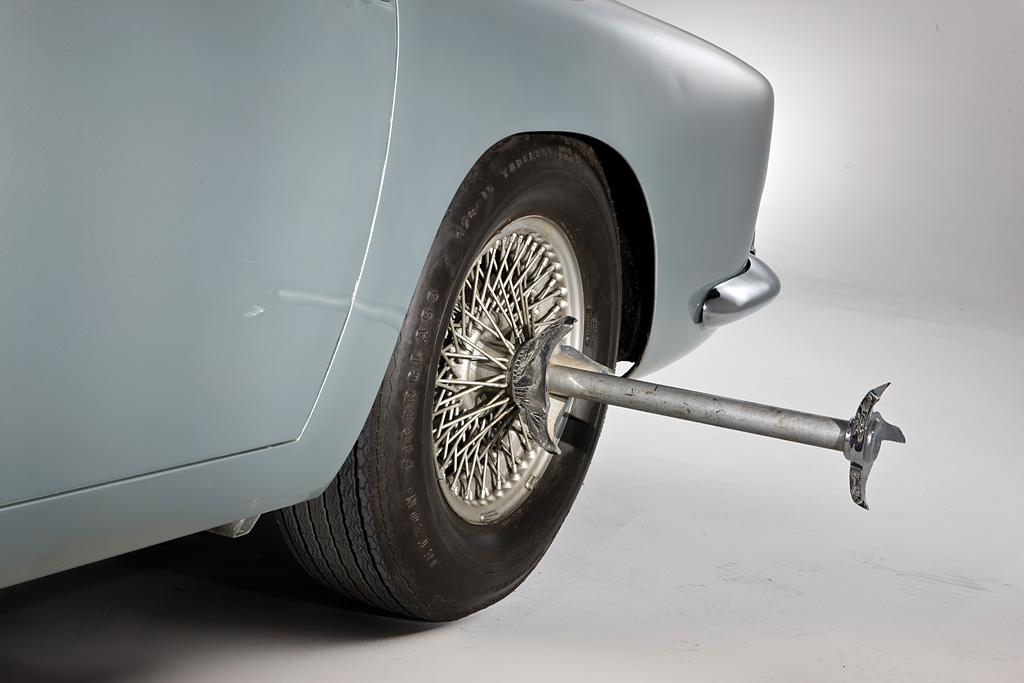1964 Aston Martin DB5 ‘James Bond’
After Aston Martin’s departure from racing, they needed a new marketing strategy and James Bond was their next best thing. When Ian Fleming’s novel Goldfinger was adapted for the big screen in 1964, 007’s ride became a Silver Birch DB5 equipped with all the necessary gimmickry for the movie. Almost overnight, it became one of the world’s most famous cars.
Playing the role of 007, Sean Connery drove the DB5 registered BMT 216A for 13 minutes of the film and world never forgot. Aston Martin produced two replicas to help promote their appearance. Afterward, car placement in blockbuster movies would never never be the same.
For the movie, the book’s DB Series III was replaced with Aston’s latest DB5. Eon Productions visited the Aston Factory who then modified a standard DB5 to include several props that accommodated the storyline. These were designed and implemented by John Stears of Star Wars and Chitty Chitty Bang Bang fame. Both of these cars were some of the very first DB5s off the production line
In the front of the car, props for hidden Browning machine guns were placed behind the front marker lights. When activated the signal lights pivoted to make way for fake barrels and shots were simulated by drops of acetylene gas which were ignited.
Rearward, the car had a bullet-proof shield that could be activated from inside the car in the center console. At the flick of a switch, a large divider lifted and completely blocked any rear vision. The exhaust also featured canisters that could offer a smoke screen. The license plate pivoted and could provide plates for Britain, France, and Switzerland. Both rear turn signals had treats, one that dispersed oil and three-pointed nails cascaded from the other.
For special occasions, in which an unwanted driver came close to the car, the front or rear bumperettes could be extended for ramming. The wire wheel knock-offs could also extend and doubled as tire slashers.
Inside a host of secret compartments were made. An ejector seat was used for one scene, and was launched using compressed-air, but was never permanently fitted. Almost predicting the future, a navigation device was installed that used a back lit and constantly moving map.
All the trickery added over 300 lbs to stock DB5, which was slightly offset by Aston’s 330 bhp upgrade. As ridiculous as this car my seem, it was a great success and exposed Aston Martin to its largest audience. Over 898 DB5 Coupes were sold which was made it the companies best-selling model.
Since 007, no other company has repeated such graceful product placement as effectively as James Bond and his DB5.
In Detail
| submitted by | Richard Owen |
| type | Concept / Prototype Car |
| built at | England |
| production | 4 |
| engine | Inline-6 |
| position | Front Longitudinal |
| aspiration | Natural |
| valvetrain | DOHC |
| displacement | 3995 cc / 243.8 in³ |
| bore | 96 mm / 3.78 in |
| stroke | 92 mm / 3.62 in |
| compression | 8.9:1 |
| power | 246.1 kw / 330 bhp |
| specific output | 82.6 bhp per litre |
| bhp/weight | 202.08 bhp per tonne |
| body / frame | Steel over Tubular Frame |
| driven wheels | RWD |
| front tires | 6.7×15 |
| rear tires | 6.7×15 |
| front brakes | Girling Discs w/Vacuum Assist |
| rear brakes | Girling Discs w/Vacuum Assist |
| front wheels | F 38.1 x 14.0 cm / 15.0 x 5.5 in |
| rear wheels | R 38.1 x 14.0 cm / 15.0 x 5.5 in |
| steering | Rack & Pinion |
| f suspension | Double Wishbones w/Coil Springs, Telescopic Dampers, Anti-Roll Bar |
| r suspension | Live Axle w/Trailing Arms, Coil Springs, Lever-Arm Dampers, Watts Linkage |
| curb weight | 1633 kg / 3600 lbs |
| wheelbase | 2490 mm / 98.0 in |
| front track | 1370 mm / 53.9 in |
| rear track | 1360 mm / 53.5 in |
| length | 4570 mm / 179.9 in |
| width | 1680 mm / 66.1 in |
| height | 1350 mm / 53.1 in |
| transmission | 5-Speed Manual |
| gear ratios | 2.70:1, 1.76:1, 1.23:1, 1.00:1, 0.83:1 |
Auction Sales History
1964 Aston Martin DB5 ‘James Bond’ DB5/1486/R –
Auction Source: 2010 Automobiles of London by RM Auctions





